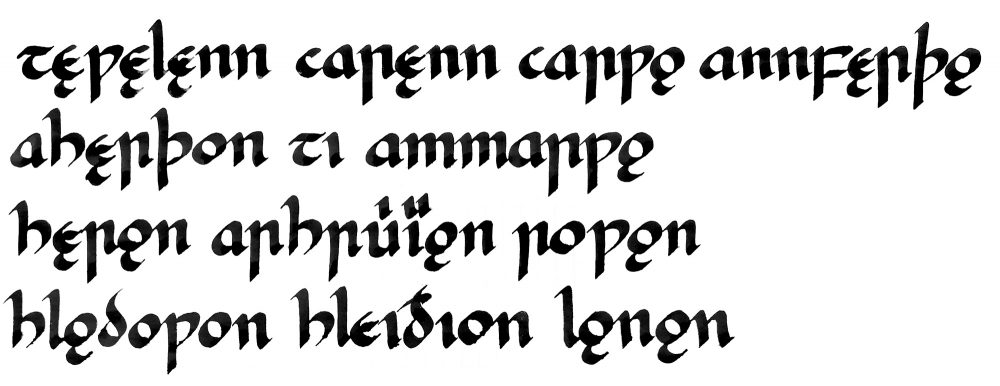So we have come to the point for which all this sad poetic movement was started yesterday. Speaking about Beta traditions, it was not for nothing that I mentioned that they are traced back to the sixth century AD, or even earlier - here, hold the thing.
A quatrain written in the form which in modern Botian is called englyn unodl union, that is, “straight single-rhyming Anglin.” With the only difference: it was written in the fourth century AD.
This form is structured like this: the first line has 10 syllables, after the fifth of them there is a caesura. In all the rest - seven, with the last syllable of the last three lines and the seventh, eighth or ninth syllable of the first line rhyming.
Further, each of the lines uses the so-called kinhaned - a certain technique consisting in constructing a verse based on alliteration and internal rhymes. The codification of different ways of organizing alliteration appeared already in the Middle Ages, but even here it can be traced very well. The verse itself is below:
Te-welenn, carenn, carwọ annverthọ
Aberthon ti, ammarwọ
Berọn, arbruyọn rowọn,
Blọdowon blėidhion llọnọn.
Translation:
I saw you, desired you, beautiful doe,
Sacrifice to you, immortal,
I would bring it; then I would buy space,
Full of wolf flowers.
And let’s quickly sort it out line by line.
- Te-welenn || carenn || carwọ annverthọ
This is the so-called cynghanedd groes - the syllables before the first caesura and the second rhyme, and the sequence of consonants between the first and second caesuras (cr) is repeated after the second. - Aberthon || ti, ammarwọ
The sequence of consonants (br-th) before the caesura roughly repeats the sequence in the previous line (vr-th). - Berọn, ar||bruyọn rowọn,
Cynghanedd sain: the sequence of consonants before the caesura (brnr) is repeated after it, with the syllable before the caesura (ar) must contain a vowel other than the last stressed syllable (ro V rowọn) - this also works. - Blọdowon || blėidhion llọnọn.
It's either cynghanedd lusg - when the last syllable before the caesura and the last stressed rhyme (on and llọ[n]), or something that is not included in modern codification, since we also see alliteration with repetition: bldn - bl-dh-n-(ll-n) .
And finally, everywhere there is a rhyme (lax) in -ọ(n): carwọ,ammarwọ, rowọn, llọnọn.
It’s difficult to tell from the handwriting, but there is a strong suspicion that this is our old friend the werewolf, not least because of the “wolf flowers.”

